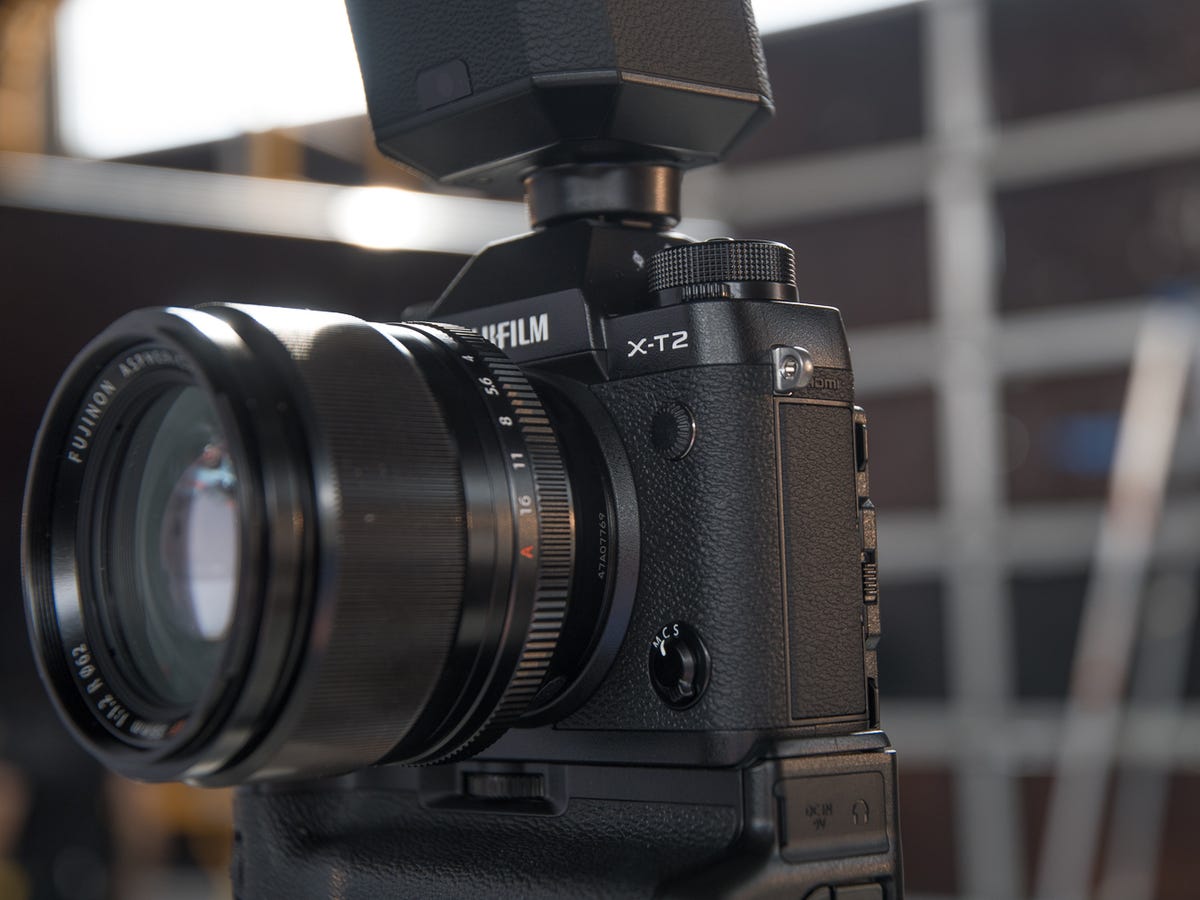
Looks similar
The camera has a very similar design to the X-T1, though there are a few important differences.
Fujifilm gets serious about video
To highlight its 4K support, Fujifilm shows off the X-T2 kitted out for serious recording.
Advantage: ILC
Like most mirrorless interchangeable-lens models their size is a lot more suited to handheld shooting when professionally equipped than dSLRs.
Flip-out display
One of the X-T2's unique features is the display, which can tilt up and down when flipped out to the right.
Dual card slots
The camera now supports two SD cards.
Information display
Connectors
The camera gets an update to USB 3 -- essential for dealing with 4K video -- and a mic input.
4K frame rates
Wireless flash options
Autofocus points cover most of the scene.
Continuous-autofocus settings
To go with its updated autofocus system, Fujifilm provides a lot more control over the settings.
Same top controls
Drive modes
Movie mode as a drive mode
The camera doesn't have a direct-record control anymore; instead, you have to be in the movie drive mode.
Back controls
Grip size
You can also see the optional battery grip.
Boost
The optional battery grip can provide higher continuous-shooting frame rates via the Boost switch.


